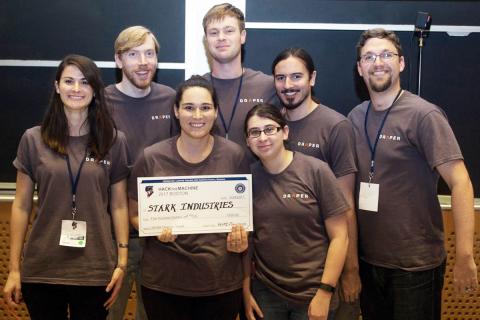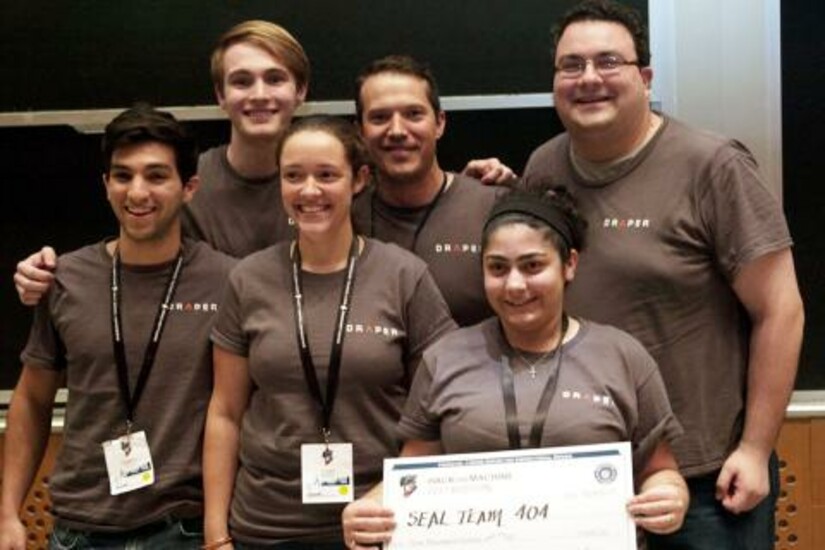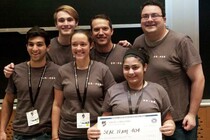Draper Scores at the U.S. Navy’s HackTheMachine Cyber Competition
CAMBRIDGE, MA—At any given time, 80 percent of the world’s cargo is moving from manufacturer to market on ships. With new cybersecurity threats surfacing daily, the need for maritime cybersecurity is more pressing than ever. To protect and maintain global commerce at sea, the U.S. Navy invited top data analysts to take on tough maritime cybersecurity use cases and challenges at its HackTheMachine event held recently in Boston.
The first-ever connected ship hackathon, hosted by the Naval Postgraduate School’s Center for Cyber Warfare and Booz Allen Hamilton, pioneered real discussion and solutions for how to protect global markets via predictable maritime navigation. Draper placed in three competitions for delivering hacks in cybersecurity, machine intelligence, behavioral understanding and human-computer interaction.
According to Kim Ryan, Senior Human Systems Engineer at Draper, cybersecurity threats are a growing concern for ships at sea. “Maritime platforms today rely on digital infrastructure for operation from port to the sea. Ships are equipped with a command center that provides information on a wide range of systems and sensors to monitor machinery, operate GPS and radar and deliver internet services for nautical chart data and crew administrative needs. Maritime crews increasingly rely on these systems, leaving them vulnerable to cybersecurity threats faced across the IoT domain.”
Over the course of 72 hours, 302 data analysts from startups, the tech industry, the U.S. Navy and top academic institutions tried their hand at one of three challenges. Challenge number one focused on a maritime “capture the flag” game that allowed participants to test their hacking skills against a connected boat in a box. The second challenge centered on a competition to design algorithms that provide maritime domain awareness, identify anomalous behavior and solve real-world problems like human trafficking and piracy. The third challenge was a design thinking sprint that targeted safer alternatives to GPS for maritime precision navigation and timing.
Draper participated in all three tracks of the hackathon, and all three teams placed.
- A team of seven engineers from two groups at Draper—Human-Computer Interaction and Cognitive and Behavioral Understanding—participated in the Virtual Reality and Disaster Relief track and earned a third-place finish for demonstrating how the Microsoft HoloLens could be used to support disaster response.
- A team of six engineers from Draper’s Machine Intelligence Group participated in the Data Science and the Seven Seas track and earned second place out of seven teams for its demonstration of a naval engine room data analysis and incident prediction system.
- A team of four cybersecurity engineers partnered with five engineers from the Fraunhofer CESE for the Maritime Capture the Flag track to place second out of four teams.
Draper provides cybersecurity capabilities to commercial, government and non-profit customers increasingly concerned about evolving cyber threats. The company has applied its multidisciplinary engineering capabilities to a variety of related programs, including cryptographically encoded, high-bandwidth communications for UAVs.
Released December 13, 2017




